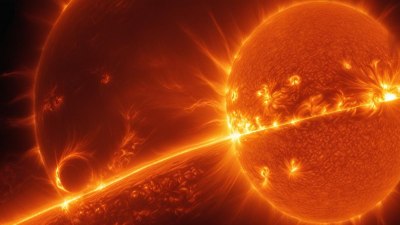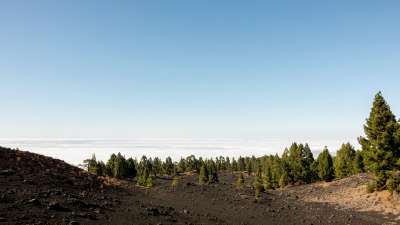How the Sun’s Solar Cycle Shapes Storm Intensity on Earth
Explore how the solar cycle of the sun impacts storm intensity on Earth.

This image was created with the assistance of Freepik
The sun is our planet's primary source of energy, and it plays a critical role in shaping various weather patterns and climate phenomena on Earth. One of the ways the sun influences weather conditions is through its solar cycle, which spans approximately 11 years. During this cycle, the sun goes through periods of increased solar activity, known as solar maximum, and periods of diminished activity, known as solar minimum. This article delves into how the variations in solar activity affect storm intensity on Earth, examining the mechanisms and consequences of these interactions.
Understanding the Solar Cycle
The solar cycle is characterized by fluctuations in solar radiation, the number of sunspots, and solar flares. At solar maximum, the sun's magnetic field is at its most complex, resulting in an increase in the number of sunspots and, consequently, a rise in solar radiation. Conversely, during solar minimum, the sun's activity decreases, leading to fewer sunspots and reduced solar radiation. These changes have far-reaching effects on Earth's atmosphere and weather systems.
The Influence of Solar Activity on Weather
The link between solar activity and Earth's weather patterns is a subject of ongoing research. Some studies suggest that increased solar activity can lead to warming of the Earth's stratosphere, which in turn influences atmospheric circulation patterns. These circulation changes can affect storm intensity and frequency, particularly in regions prone to severe weather.
Mechanisms of Influence
One of the critical mechanisms through which solar activity impacts weather is the modulation of cosmic rays. During periods of heightened solar activity, the sun emits more solar wind, which creates a 'bubble' that protects the Earth from cosmic rays—high-energy particles from outer space. Some researchers argue that cosmic rays play a role in cloud formation; thus, variations in solar activity can affect cloud cover and, consequently, precipitation patterns.
Storm Intensity and Frequency
Storm intensity is influenced by various climatic and atmospheric factors, but solar activity can act as an additional variable. For instance, during solar maximum, increased solar radiation may lead to warmer ocean temperatures, creating conditions favorable for more violent storms, including hurricanes and typhoons. Conversely, during solar minimum, cooler ocean temperatures could result in less intense storms.
Statistical Evidence
Numerous studies have examined the relationship between solar cycles and storm activity. For example, research has indicated that there tends to be an increase in hurricane activity during solar maximum periods. Scientists have analyzed historical data, revealing patterns that suggest a correlation between the solar cycle and the occurrence of severe weather events.
Regional Variability
The impact of the solar cycle on storm intensity is not uniform across the globe; different regions experience varying effects. In the Atlantic basin, for example, an increase in hurricane activity has often been observed during solar maximum. Conversely, studies focusing on other regions, such as the Pacific, may yield different results. Understanding these regional variabilities is essential for accurate weather forecasting and disaster preparedness.
Global Climate Change Implications
As the Earth grapples with climate change, understanding the solar cycle's implications becomes even more crucial. While solar activity is a natural phenomenon, shifts in climate brought about by human activities may interact with solar influence in complex ways. For example, if ongoing climate changes lead to warmer ocean temperatures, the impact of solar activity on storm intensity could be exacerbated, leading to a higher frequency of extreme weather events.
Future Research Directions
The study of solar impacts on weather and climate is an active field of research. Future investigations aim to improve our understanding of the underlying mechanisms and refine predictive models. Advancements in solar observation technology and climate modeling will enhance the capability to forecast how the solar cycle may influence storm intensity and other climatic phenomena in the future.
In conclusion, the sun's solar cycle plays a significant role in shaping weather patterns on Earth, particularly in influencing storm intensity. The complex interplay between solar activity, atmospheric conditions, and climatic factors highlights the importance of continued research in this area. As we deepen our understanding of these dynamics, we can improve our preparedness for severe weather and contribute to more effective climate change strategies.











